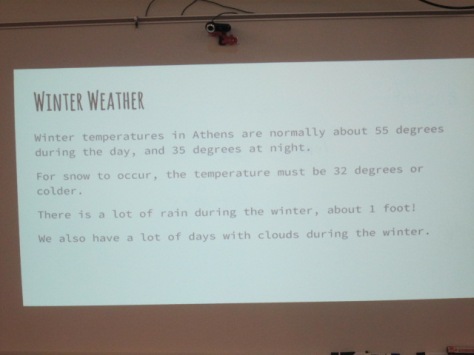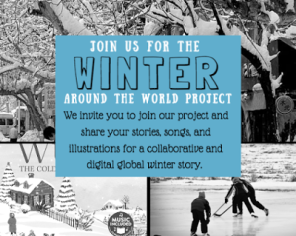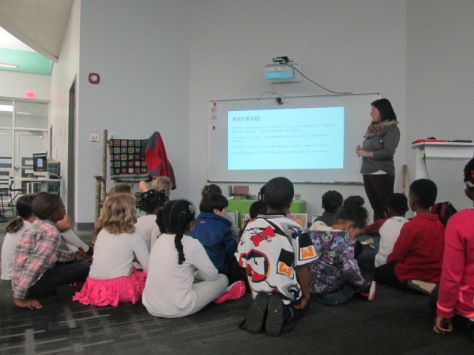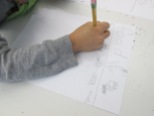
For the past few weeks, 2 classes have been involved in exploring winter right here in Athens, Georgia. Even though we might associate cold and snow with winter, it isn’t always like that where we live. Ms. Kelly’s Kindergarten class and Ms. Ramseyer’s 2nd grade class both participated. You can read about the beginnings of their projects here. Our work is all coming together with classrooms from around the world on a collaborative Google slide presentation.
Ms. Kelly’s class has been busy in their classroom dividing into groups and building a song about winter. As a class, they worked on the base beat using beatlab. Then different groups worked on parts of the song. Singers created the words and sang them. Clappers used their hands to add rhythm. Ukuleles strummed chords for another layer. Instruments such as coffee can drums added even another layer of rhythm.

Ms. Kelly wrote the words up onto a big chart paper with plenty of visuals for students to follow. She saved their class beat in beatlab and pulled it up on the library projector. I used Screencastomatic to record the beat along with our webcam recording the student performers. Ms. Kelly used dry erase markers to make notes on the beatlab beat for specific groups of students. She also used a cowbell and her voice to help students know when to come in.
We gave ourselves plenty of time to record multiple times, but we just loved our first take!
Even though we were in love with that version, we decided to try one more time with just an iPad so that we could get some closeup shots of students performing. We love this version too, but we are including the 1st one in our global winter project with classrooms around the world.
We had some fun shout outs while we were working on our song, including some retweets from Kishi Bashi who was one of our inspirations for our song.
https://twitter.com/CantataLearning/status/667369239230070785
https://twitter.com/MrsPstorytime/status/667393385318105088
Ms. Ramseyer’s 2nd grade class split into groups of 4. Two students were author and two were illustrators. After starting their work in the library, they continued to write and draw in class to tell about personal experience with winter in Athens. They featured things like food, clothing, school, and events in winter.
Each group came to the library with their finished work. We spread their pages out on tables and took digital pictures of each page. We then took these and added them to the collaborative Google presentation.
In Youtube, we pulled up the feature where you can record straight into Youtube with your webcam. We placed each page in front of the webcam and students read their winter personal narratives and facts. These videos were also embedded on the Google slides.
We look forward to seeing how the rest of the slides turn out as we learn about winter around the world!













































